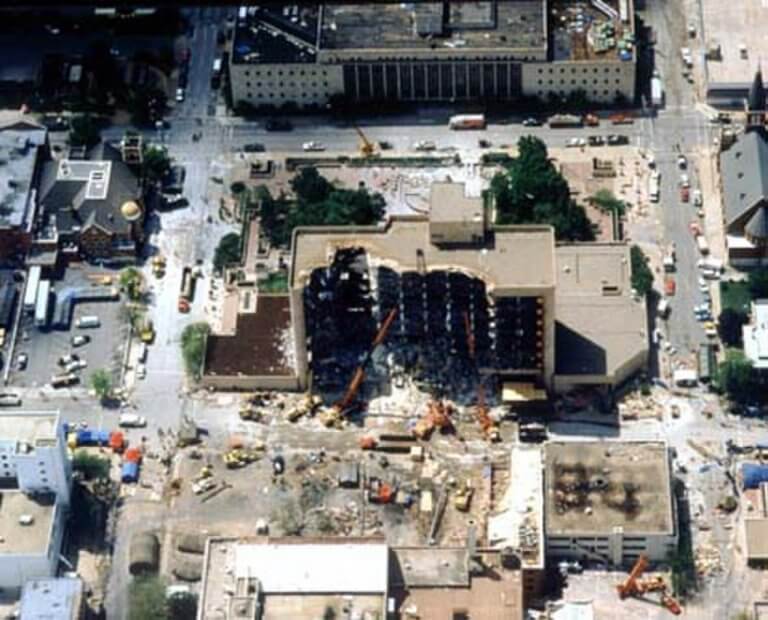Our Solutions
Explosions in complex environments

Projects: SIRENE ("Rapid Simulation of the Detrimental Effects of an Explosion") and URBEX ("URBan EXplosions").
NOTE: The following text is partly taken from the text of a collaborative project on explosions in complex environments (SIRENE project, currently under analysis). The project partners are IT Link, the PRISME laboratory and RS2N. APEX solutions is a subcontractor for the modeling of shock waves and fragments, and WiseBIM is a subcontractor for the acquisition of geometric data concerning buildings.
Explosive hazards, which can arise from industrial or accidental risks such as terrorist threats or the use of munitions in armed conflicts, are major hazards because of the extent and nature of the potential consequences for structures and populations. Recent events of various kinds (gas explosion on Trévise Street in Paris in January 2019, explosions in the port of Beirut in August 2020, and the latest suicide bombing in Baghdad on January 21) highlight the importance of these phenomena and the influence of the urban environment.
In an open field (which is never the case in practice), it’s easy to model the physical parameters and consequences of an explosion, and calculations are instantaneous. For complex situations (such as an explosion in an urban environment, in a building or in a network of tunnels), there are very few rapid modeling approaches, and the state of the art remains the use of 3D numerical simulation. Besides the usual challenges associated with such simulations (availability of a code that covers all the required phenomena, required computing power, technical skills of the operators, etc.), there are even more fundamental intrinsic limitations: the mesh fineness needed to correctly represent the airborne blast wave is more accurate than the geometric data generally available. Furthermore, given that the goal is to define the extent of danger zones, particularly the risk of glass breakage (in urban environments), which accounts for 80% to 90% of injuries, the mesh fineness required does not allow simulations to be run in a reasonable time, even on the most powerful parallel computers.
When the founder of APEX solutions was at the CEA, he and R. Soulié (now at CETID) developed the FLASH fast code to process explosions in urban environments, as part of the ANR DEMOCRITE project. Although this code is on a par with the international state-of-the-art, it does have its shortcomings. APEX solutions is now developing a new approach to the rapid simulation of explosions with obstacles, making a complete break with the existing code. This will allow us to rapidly simulate all the phenomena associated with explosions (we call them the Four Horsemen of the Apocalypse: blast wave, fragments, fireball and quasistatic pressure), by pooling the skills of our different partners.
Here are some of the scenarios that our tools will be able to handle:
- an intervention team, whether on OPEX or on home soil, has to break through an armored door to enter a residence. What is the safe distance for team members?
- a suspicious vehicle is parked in front of a critical infrastructure, or a suspicious package is found in an access tunnel to a metro station. What area needs to be evacuated, and where should the response team intervene?
- after an accidental or deliberate explosion, can we assess the damage caused by the equivalent mass of explosives?
- a company wants to set up a new building in a pyrotechnic zone. Which locations comply with current regulations?
- fan zones are planned for a major sporting event. The estimated explosive threat in the event of a terrorist attack is 250 kg TNT equivalent. Which streets should be blocked off, and at what distance from the zone to protect?
- A company located in a suburban area needs to map the danger zones for overpressure. How can we quickly assess realistic zones, while taking existing buildings into account (conventional PPRT zones are assessed on bare ground, which is not at all conservative in terms of safety)?
- an unexploded munition from the Second World War is unearthed on a construction site. How can we quickly determine the limits of the pyrotechnic clearance site?
- a tank containing pressurized liquefied gas is caught in a vegetation fire. Can we quickly determine the danger zones?
Don’t hesitate to contact us if explosion hazard is one of your areas of interest, as we are in the process of building a business community in this field, bringing together state or semi-state players, operational staff, design offices, academic partners and private companies.
